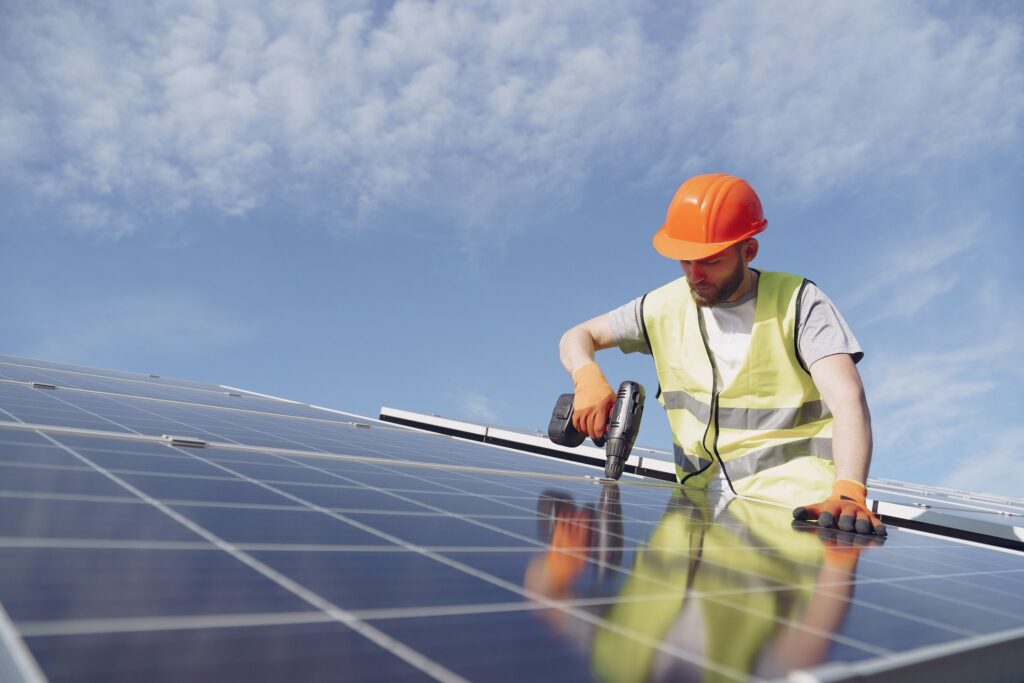POSTED
November 8, 2024
7 Reasons Why Solar Farming Should Be Your Next Investment
As the world shifts toward sustainable energy solutions, the question isn’t whether solar energy is the future; it’s how you can be a part of it. Utility-scale solar farms offer a unique opportunity for investors to make a difference in their financial portfolios and the world at large. This is especially important as climate change continues to pose a significant threat to the planet.

Solar farms are more than an investment in green energy. They’re a chance to actively reduce carbon emissions, support local communities, and potentially generate consistent, long-term returns. In this article, we’ll explore seven compelling reasons why solar farming should be your next investment.
Rapid Growth of Renewable Energy
Solar energy is growing fast. In 2023, global renewable energy capacity increased by 50%. This represents 507 gigawatts of clean energy. This growth is also primarily driven by utility-scale solar farms. In fact, over the next five years, the International Energy Agency expects the addition of renewable power capacity to increase, with solar and wind power accounting for 96% of new capacity.
Combating Climate Change
Utility-scale solar is one of the most effective ways to reduce carbon emissions since electricity generated from solar displaces energy from other sources like coal, natural gas, and oil. These fossil fuels can emit upwards of 2,315 pounds of CO2 equivalent per megawatt hour (MWh). Simply replacing these fuel sources with solar power can reduce carbon emissions by approximately 385,000 to 436,000 pounds of CO2 per acre of solar.
Government Incentives and Tax Breaks

The Inflation Reduction Act (IRA), signed into law on August 16, 2022, offers many incentives designed to promote solar energy projects. The act extends the Solar Investment Tax Credit (ITC) at 30% for projects starting construction by the end of 2032. The IRA also expanded the Production Tax Credit (PTC) for solar power, providing a base rate of $0.0275 per kilowatt hour (kWh) for electricity produced from qualified solar facilities. These incentives lower upfront costs and aim to bolster the adoption of solar energy.
Long-Term Financial Stability
Utility-scale solar farms have shown strong returns. Power Purchase Agreements (PPAs) help generate stable income by allowing power producers to sell electricity at a predetermined price for a specified period, typically ranging from 10 to 25 years. Thanks to government incentives, PPAs, and the growing demand for solar energy, the internal rate of return on a utility-scale solar farm is 5-8%, depending on the project specifics and market conditions. This can translate to $5-$8 million in annual revenue on a $100 million project.
Decreasing Costs of Solar Technology
The cost of solar technology is decreasing. The levelized cost of energy (LCOE) for solar power fell to $39 per MWh in 2022. When factoring in federal investment tax credits, the LCOE can drop to as low as $29 per MWh. This reduction improves the profitability and attractiveness of solar investment funds. What’s more, the average market value of solar increased by 40% in the same years, indicating growing economic appeal.
Minimal Environmental Impact
Solar power generates electricity without emitting greenhouse gasses. The life cycle emissions of a solar power plant, including manufacturing, installations, and decommission, is approximately 95 pounds per MWh. In contrast, life cycle emissions from coal power plants are around 2,000 pounds per MWh. Solar panels also offset their life cycle emissions within 2 to 3 years of operation and continue reducing carbon emissions without adding more greenhouse gasses to the atmosphere.
Social and Community Impact

Utility-scale solar projects positively impact communities in many ways. During the construction phase alone, a single solar farm can create hundreds of jobs over several months or even years. These projects often lead to upgrades in local infrastructure like roads and electrical grids. This helps support new installations and leads to a more resilient grid for the host community. Local economies can also benefit from increased spending by workers involved in construction and maintenance. Local governments tend to see an increase in revenues from higher property taxes, more sales taxes, and increased income taxes.
Solar farming presents a powerful opportunity to invest in the future of energy while making a meaningful difference in the fight against climate change. Whether you’re driven by profit, purpose, or both, solar investments offer a rare combination of financial and social returns.
At Shasta Power, we help investors make a positive environmental and social impact. Visit our investment information page to learn more about our solar projects and investment opportunities.





